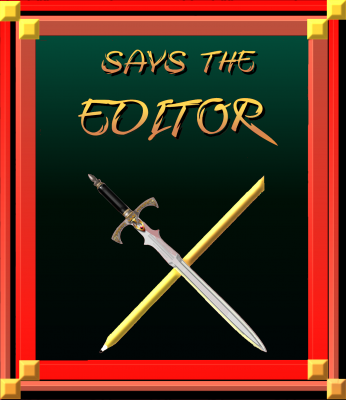February 8, 2018

I love that you guys are reading my posts and interacting with me and with them. This one, about dialogue tags, in particular has raised a number of questions and responses.
We’ve already talked about asks versus said.
But, another author asked, what about the Tom Swiftlies? Or maybe she spelled it Tom Swiftlys, which I suppose is actually more accurate, if we pretend that SWIFTLY is Tom’s last name.
At any rate, she’s got a point. When we’re talking dialogue tags and the power of the verb we use — ask, said, demanded, emoted, swore — we should also talk about those pesky little adverbs. You know: He said softly. He yelled loudly. He swore aggressively. He stated belligerently.
Notice how these are all TELLING words. They tell us how the speaker did his verb (said, yelled, swore, stated). But do they show?
Go back to the time-worn canon: show, don’t tell. Now, we all know that by and large, this is a truth of fiction. Show, don’t tell.
But we also know there are times when it’s okay, or even better, to tell, don’t show.
How do you know which is the right thing to do when writing dialogue?
For me, this one’s fairly easy, but it involves a lot of trust in your reader (which is where I think a lot of this breakdown occurs. That, or bad sixth grade teachers who thought adverbs with dialogue were all that and more). Can the reader figure out how something is conveyed if you remove the adverb? Yelling is a loud thing. You can’t yell quietly. (Admit it: you tried.) You can be forceful and strong but quiet, but you can’t yell. Even Webster’s agrees:
Definition of yell
intransitive verb
1 : to utter a loud cry, scream, or shout
2 : to give a cheer usually in unison
transitive verb
: to utter or declare with or as if with a yell : shout
Look at that top definition: to utter a loud cry, scream, or shout — see it? By definition, a yell is loud. There’s no need to tell us!
Sometimes, it’s not that cut and dry. You can state things calmly, quietly, belligerently, aggressively… the list goes on. So how do you still convey your meaning yet remove the adverb?
Two ways, and they don’t have to be exclusive of each other. The first is via word choice. Someone being aggressive is going to use a different set of words than someone who is being calm, or even someone being diplomatic. An aggressive lover versus a persuasive lover — “Come here.” versus “If you come over here, I’ll make it worth your while.”
The second way can be a little more challenging, and that’s by showing your speaker’s body language. “Come here” might be accompanied by a hand on a hip and a finger curling in and out, or pointing at the spot in question. The head might be held a little higher, the chest held upright in perfect posture. Contrast that with someone trying to persuade, where the posture won’t be so assertive: the shoulders might be hunched, the head drawn down on the neck. Instead of pointing at the partner or at the space the speaker desires the listener to occupy, maybe the speaker pats the couch beside him (or her). Maybe s/he is sitting, not standing.
There are a million ways to convey body language, and of course, this is a spot — just like those darn pesky adverbs — that can trip you up. Why? How? Didn’t I just say body language is good?
Yes, but too much of it, or when used at the wrong time, and you’ve undermined yourself.
I know. It’s hard. It’s confusing.
Remember, folks, that writing is a CRAFT. Sometimes, what seems vitally important in the early stages of a manuscript’s development becomes fodder for the delete key later on. And often, the reverse is true as you get to know your characters and the situations they find themselves in.
So give it a try. Take a hard look at your writing. Are you a Tom Swiftly? Do you over-adverb your dialogue tags?
If you need help, you know where and how to reach me. I’m here to help, after all. And in the meantime, keep the questions and good stuff coming!